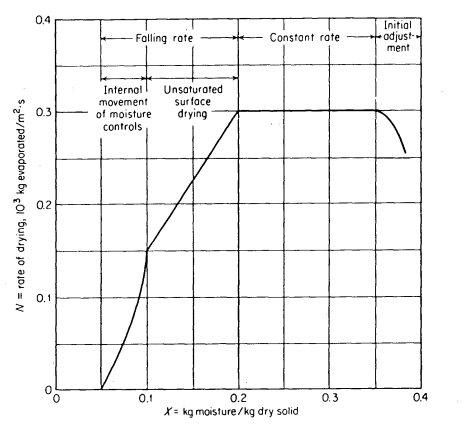The commercial rotary dryers used to dry wood wafers (of approximate dimensions 0.63 mmthick, 50 mm wide and 76+ mm long) for the production of panelboard are modifiedversions of agricultural dryers and have not been designed for the optimal drying of woodwafers. The lack of available information on wafer drying necessitated that the first goalof this research was the characterization of wafer drying behaviour. After the importantparameters of wafer drying were identified, the applicability of fiuidized bed technologyto wafer drying was assessed and an industrial size dryer was designed. The proposedfiuidized bed wafer dryer was then compared to a commercial rotary dryer in terms ofenergy efficiency.
Wafer drying behaviour was investigated in two factorial experiments. Three lengthsof wafers (25 mm, 44 mm and 63 mm) were individually dried in a 0.15 m draft tube attemperatures of 90°C, 120°C and 150°C. The statistical analysis of the resultant dryingrate curves showed that the drying behaviour of aspen wafers was influenced by the effectof wafer length on the external heat and mass transfer rates to the wafer surface, and onthe length of internal pathways for bulk flow and diffusion of water. The external dryingconditions had a decreasing effect on drying rate until about 10% moisture content at whichtime drying became limited by internal heat and mass transport.
The initial assessment of fiuidized bed technology for wafer drying used a 0.15 m semicylindrical column for the determination of wafer drying rate curves and wafer behaviour ina fiuidized bed of inert particulate solids at excess superficial velocities of 0.25 to 1.0 m/s.Wafer drying times in a bed of 0.5 mm sand at 150°C were about 40% of the dryingtimes for wafers dried by forced convection of air at the same temperature and twice thesuperficial velocity (~ 1 m/s).

Once the flow of water to the surface has been completely interrupted by the intrusionof air into the capillary system, a drying front is formed below the surface of the material.As the free water recedes deeper into the material, the drying front progresses towardthe core until the material has reached an equilibrium moisture content with the externaldrying conditions. During this portion of the falling rate period, drying is controlled bythe diffusion of water from the wet core of the material to its surface.
上一篇: 半导体制造过程中薄膜的流体动力学